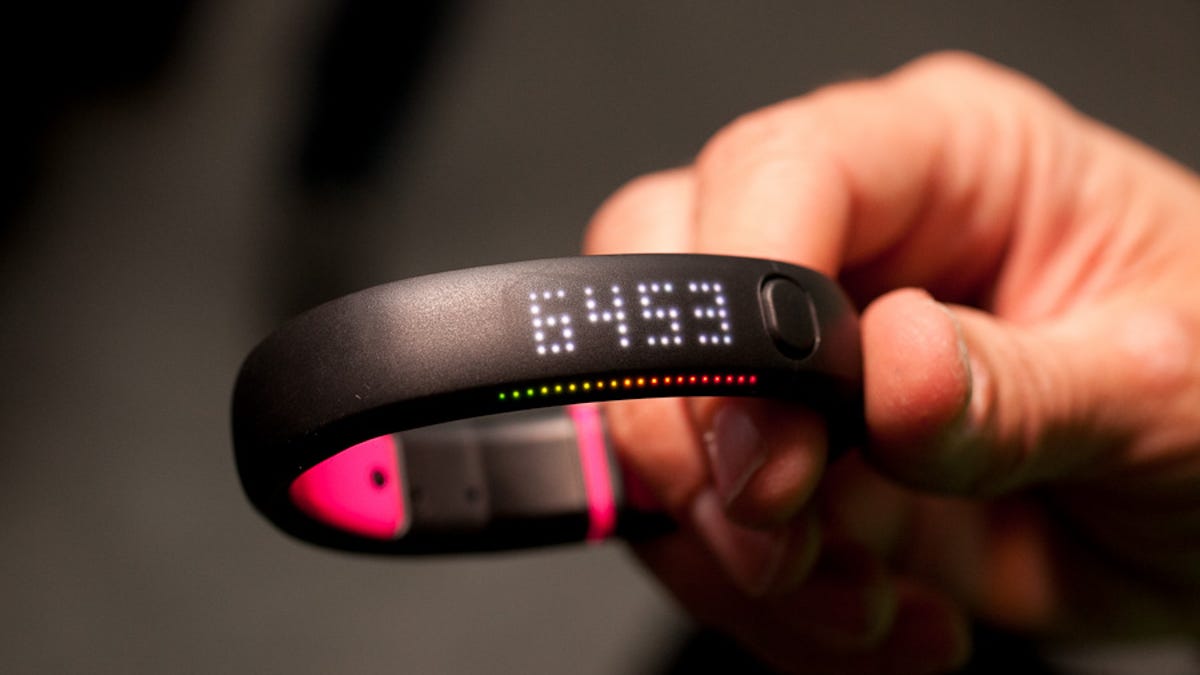Nike's no-Android stance on FuelBand is a huge mistake
<b>commentary</b> By focusing on its "core base," Nike is ignoring a much larger segment of the market.

Nike is only shooting itself in the foot with its stubborn reluctance to work with Android.
The athletic apparel company on Tuesday introduced its second-generation fitness tracker, the
It's a glaring omission that Nike still doesn't offer support for Android, which is the undisputed mobile platform champ with 80 percent of the global market. At a time when more developers are looking to expand the number of platforms they are on, Nike has stubbornly clung to its comfort zone and stayed with iOS.
But the company, for its part, maintains that the decision is tied to its desire to focus on a single consistent experience.
"With the audience using iOS and the audience using the Web, we wanted to make sure that we had the best experience possible," said Ricky Engelberg, the experience director for Nike's digital sports business. "We always want to evaluate new platforms, but we want to make sure we take care of the platforms that we're on."
That was the same argument Nike gave when it first introduced the original
Indeed, Nike's strategy only works if you operate in a void. But the company isn't alone in the fitness tracker business, and indeed, competition has risen quite a bit.
Since then, there have been a number of worthy products that have hit the market. The
Not surprisingly, both apps support iOS and Android.
At a time when the fitness tracker business is heating up, Nike can ill-afford alienating a huge chunk of the population with an iOS-only product. While Nike won't admit to it, there are a few reasons why it has shied away from Android.
Here's why it's iOS-only
For the most part, Nike has gotten away with staying on iOS. As a largely North America-centric product (as well as the UK), the FuelBand benefits from the higher mix of iOS users in this country. While Samsung and Android have taken the smartphone crown here, the iPhone remains the country's single most successful mobile franchise.
FuelBand, however, is starting to go global, expanding into France, Germany, and Japan. It's in the newer markets where Nike will start to see the shift towards Android dominance.
There is also the thinking that iOS users are typically consumers that are more affluent. While there are a fair number of high-end Android phones, including the
"A lot of Android's market share comes from the low end," said Avi Greengart, an analyst at Current Analysis. In many cases, the wearable device costs more than the inexpensive Android phone itself."
Android is also far more fragmented than iOS. In the first week of iOS 7's debut, 50 percent of the base had converted over. On Android, there are phones will multiple versions of Android, altered flavors like HTC Sense, and different screen sizes.
Bluetooth support is also an issue. The new FuelBand SE also runs on the newer Bluetooth 4.0 standard, which hasn't really yet been embraced by the Android community and was only recently officially supported by Android in version 4.3.
In comparison, Apple's iPhone 4S and later all support the standard, which allow for simpler, longer, and more power-efficient connections between devices.
The original FuelBand didn't use Bluetooth 4.0, so there technically isn't a reason why Nike couldn't create an Android app for it.
There's also an argument that the sheer amount of new sensors in Android phones -- such as the sensor-loaded Galaxy S4 -- may dampen the need for a device like the FuelBand.
But that concern doesn't appear to bother Nike when it pertains to the iPhone. When asked about the M7 processor found in the iPhone 5S, Engelberg said that the company is happy to support the sensor (the Nike+ Move app allows your iPhone 5S to earn NikeFuel points), but said there would be instances where you wouldn't want to carry a smartphone, such as when you're playing basketball or playing tennis. He saw it as an opportunity to build awareness for a product like the FuelBand.
Engelberg declined to comment on the prospect of Apple potentially getting into the business with the long-rumored iWatch, noting only that it would be hard for any company to replicate the thousands of hours of research and tinkering it has done to adjust the NikeFuel algorhithms.
Lastly, conspiracy theorists may point to Apple CEO Tim Cook's presence on the Nike board as a hint of some deeper alliance between the two companies. Nike, of course, denied any such influence.
While some of the issues with Android are valid, the market is moving to a point where companies and developers can no longer ignore Google's blockbuster platform. For Nike to keep doing so is tantamount to burying its head in the sand.
CNET's Josh Lowensohn contributed to this report.

